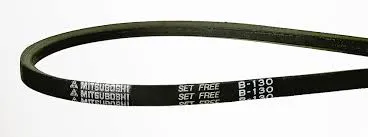- Arabic
- French
- Russian
- Spanish
- Portuguese
- Turkish
- Armenian
- English
- Albanian
- Amharic
- Azerbaijani
- Basque
- Belarusian
- Bengali
- Bosnian
- Bulgarian
- Catalan
- Cebuano
- Corsican
- Croatian
- Czech
- Danish
- Dutch
- Afrikaans
- Esperanto
- Estonian
- Finnish
- Frisian
- Galician
- Georgian
- German
- Greek
- Gujarati
- Haitian Creole
- hausa
- hawaiian
- Hebrew
- Hindi
- Miao
- Hungarian
- Icelandic
- igbo
- Indonesian
- irish
- Italian
- Japanese
- Javanese
- Kannada
- kazakh
- Khmer
- Rwandese
- Korean
- Kurdish
- Kyrgyz
- Lao
- Latin
- Latvian
- Lithuanian
- Luxembourgish
- Macedonian
- Malgashi
- Malay
- Malayalam
- Maltese
- Maori
- Marathi
- Mongolian
- Myanmar
- Nepali
- Norwegian
- Norwegian
- Occitan
- Pashto
- Persian
- Polish
- Punjabi
- Romanian
- Samoan
- Scottish Gaelic
- Serbian
- Sesotho
- Shona
- Sindhi
- Sinhala
- Slovak
- Slovenian
- Somali
- Sundanese
- Swahili
- Swedish
- Tagalog
- Tajik
- Tamil
- Tatar
- Telugu
- Thai
- Turkmen
- Ukrainian
- Urdu
- Uighur
- Uzbek
- Vietnamese
- Welsh
- Bantu
- Yiddish
- Yoruba
- Zulu
Aug . 09, 2024 05:15 Back to list
Understanding the Differences Between Timing Belts and Alternator Belts for Your Vehicle's Performance
Understanding the Timing Belt and Alternator Belt in Your Car
When it comes to car maintenance and performance, two components that often get overshadowed by tires and engines are the timing belt and the alternator belt. However, understanding these belts is crucial for any car owner aiming for longevity and smooth operation of their vehicle.
What is the Timing Belt?
The timing belt is a critical component of your vehicle’s internal combustion engine. It is a rubber belt that synchronizes the rotation of the crankshaft and the camshaft, ensuring that the engine's valves open and close at the correct times during each cylinder's intake and exhaust strokes. This synchronization is essential for the engine to run efficiently and smoothly. Most vehicles equipped with a timing belt will require it to be replaced every 60,000 to 100,000 miles, though this can vary by manufacturer.
Failure of the timing belt can lead to catastrophic engine failure, including bent valves, damaged pistons, or even complete engine breakdown. To prevent such costly repairs, it is crucial to follow your manufacturer’s recommended maintenance schedule for timing belt replacement.
What is the Alternator Belt?
The alternator belt, also known as the serpentine belt, is a long, continuous belt that drives multiple peripheral devices in an engine. Its primary function is to power the alternator, which charges the car battery and powers the electrical system when the engine is running. In addition to the alternator, this belt often powers other components such as the power steering pump, water pump, and air conditioning compressor.
Unlike the timing belt, which is crucial for engine functionality, the alternator belt is more about ensuring that your vehicle's electrical systems are functional and operate smoothly. Though alternator belts generally have a longer lifespan, they should be inspected regularly for signs of wear, such as cracks, fraying, or squeaking noises. Typically, it’s recommended to replace the alternator belt every 50,000 to 70,000 miles.
timing belt for car\/timing belt and alternator belt

Signs of Wear and When to Replace
Both the timing belt and the alternator belt will show signs of wear over time. For the timing belt, look out for the following symptoms
1. Ticking Noise A ticking noise coming from the engine could indicate that the timing belt is loose or wearing out. 2. Engine Misfires If the timing belt is damaged, it can cause the engine to misfire. 3. Oil Leaks Oil leaking from the front of the engine can sometimes indicate a failing timing belt.
For the alternator belt, signs of wear include
1. Squealing Noises If you hear a high-pitched squeal when starting your car, it could be the alternator belt slipping. 2. Battery Warning Light An illuminated battery warning light on your dashboard might indicate a problem with the alternator belt. 3. Loss of Power Steering If you experience difficulty steering, this could indicate that the power steering pump is not being driven properly by the alternator belt.
Conclusion
Maintaining the timing belt and alternator belt is essential for the optimal performance of your vehicle. While they serve different functions, both are integral to your car's operation. Regular inspections and timely replacements can prevent costly repairs and enhance your vehicle's reliability. Always consult your vehicle’s service manual and consider seeking help from a professional mechanic during belt maintenance. By staying informed and proactive, you can ensure a smoother, more efficient ride for years to come.
-
Upgrade Power Steering Pump Belt for Smooth, Quiet Operation
NewsAug.27,2025
-
Precision Timing Belt & Chain: Engine Performance & Durability
NewsAug.26,2025
-
Precision Lathe Drive Belts: Durable & Reliable Performance
NewsAug.25,2025
-
84.5 Serpentine Belt: Durable & Precision Fit for Your Engine
NewsAug.24,2025
-
Premium Ribbed Drive Belts for Quiet Power Transmission
NewsAug.23,2025
-
High-Performance Vehicle Timing Belt for Engine Precision
NewsAug.22,2025

